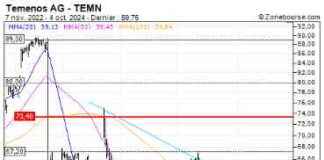China’s Wig Industry Booming as Gen Z Grapples with Hair Loss
In recent years, the wig industry in China has experienced a significant surge in demand, particularly among young people facing issues of hair loss. From full wigs to detachable extensions and themed products for cosplay enthusiasts, the market for hair accessories is flourishing across the country. Xuchang, a city in central Henan province known as the “world’s wig capital,” has emerged as a hub for wig manufacturing, with over 4,000 enterprises contributing to 60% of the global market share.
The Rise of Wigs Among Gen Z
The popularity of wigs among young Chinese consumers can be attributed to various factors, including the practical need to cover hair loss and the desire for versatile styling options. With the increasing prevalence of premature hair loss among individuals under the age of 30, the demand for quality wigs has seen a significant uptick. According to a survey by the National Health Commission, one in six people in China suffers from hair loss, with 84% experiencing the issue before reaching 30 years of age.
For many individuals like Xu, a 32-year-old white-collar worker in Shanghai, wigs offer an affordable solution to address hair loss concerns. While hair transplant surgery can cost upwards of 20,000 yuan in China, a quality wig made of chemical fiber is priced at a fraction of that amount, making it a practical and accessible option for those seeking to conceal baldness. Xu, who regularly wears a wig extension to cover his receding hairline, emphasized the simplicity and convenience of using wigs as a way to cope with hair loss.
Beyond Hair Loss Solutions
However, the growing interest in wigs extends beyond addressing hair loss issues. Wigs have become essential accessories for cosplay and Hanfu enthusiasts, driven by the increasing popularity of ACG (anime, comic, and game) culture in China. With a burgeoning user base of 490 million in 2023, the demand for themed wigs catering to cosplay enthusiasts has been on the rise. E-commerce platforms report sales of “cosplay wigs” exceeding 20,000 units each month, indicating a strong consumer interest in these specialized products.
The Influence of Media and Beauty Standards
The emphasis on personal appearance and beauty standards set by the media has also contributed to the growing demand for wigs among young Chinese consumers. Both men and women are increasingly seeking ways to enhance their appearance through styling options offered by wigs. Platforms like Xiaohongshu have seen a surge in posts related to wigs, with users sharing recommendations on how to achieve the looks of their favorite celebrities using wig products.
The Impact of Global Trends on China’s Wig Industry
The global hair wig market is projected to grow significantly in the coming years, with China emerging as a dominant player in the industry. While Japan and South Korea have historically been key players in the wig market, China’s market share has been steadily increasing, fueled by the country’s robust manufacturing capabilities and cross-border e-commerce channels. Chinese wig exports totaled $3 billion in 2022, capturing a substantial portion of the global hair accessories market.
In Xuchang, local wig enterprises have reported a surge in orders from both domestic and international markets, prompting factories to ramp up production to meet the growing demand. Sales of a wide range of wig products, from affordable chemical fiber wigs to high-end natural hair wigs, have seen significant growth. Zheng Wenqing, a senior executive at a wig enterprise in Xuchang, noted a 20-30% increase in sales through online and offline channels this year alone, underscoring the industry’s rapid expansion.
Challenges and Concerns in the Wig Market
Despite the booming growth of the wig industry, challenges persist, including a lack of innovation among manufacturers and concerns over product safety. Many wig makers offer similar products, leading to a competitive market landscape. Additionally, safety concerns have been raised regarding the quality of wig products, with some containing harmful substances that pose risks to human health. A sampling test conducted by the Shanghai Consumer Council in 2022 found that 60% of wig products in the market contained potentially harmful substances, highlighting the need for stricter quality control measures.
Looking Ahead: The Future of China’s Wig Industry
As the demand for wigs continues to rise in China and globally, the future of the country’s wig industry looks promising. With a growing consumer base seeking innovative and high-quality wig products, manufacturers are poised to capitalize on this trend. By addressing concerns related to product safety and quality while fostering creativity and innovation in the industry, China’s wig market is poised to maintain its competitive edge and meet the evolving needs of consumers worldwide.
In conclusion, the thriving wig industry in China reflects a convergence of factors, from the practical need to address hair loss to the growing interest in styling options and themed products. With young consumers driving demand for wigs across various segments, including cosplay and personal grooming, the industry is poised for continued growth. By overcoming challenges related to product safety and innovation, Chinese wig manufacturers are well-positioned to capitalize on the expanding global market for hair accessories.

















